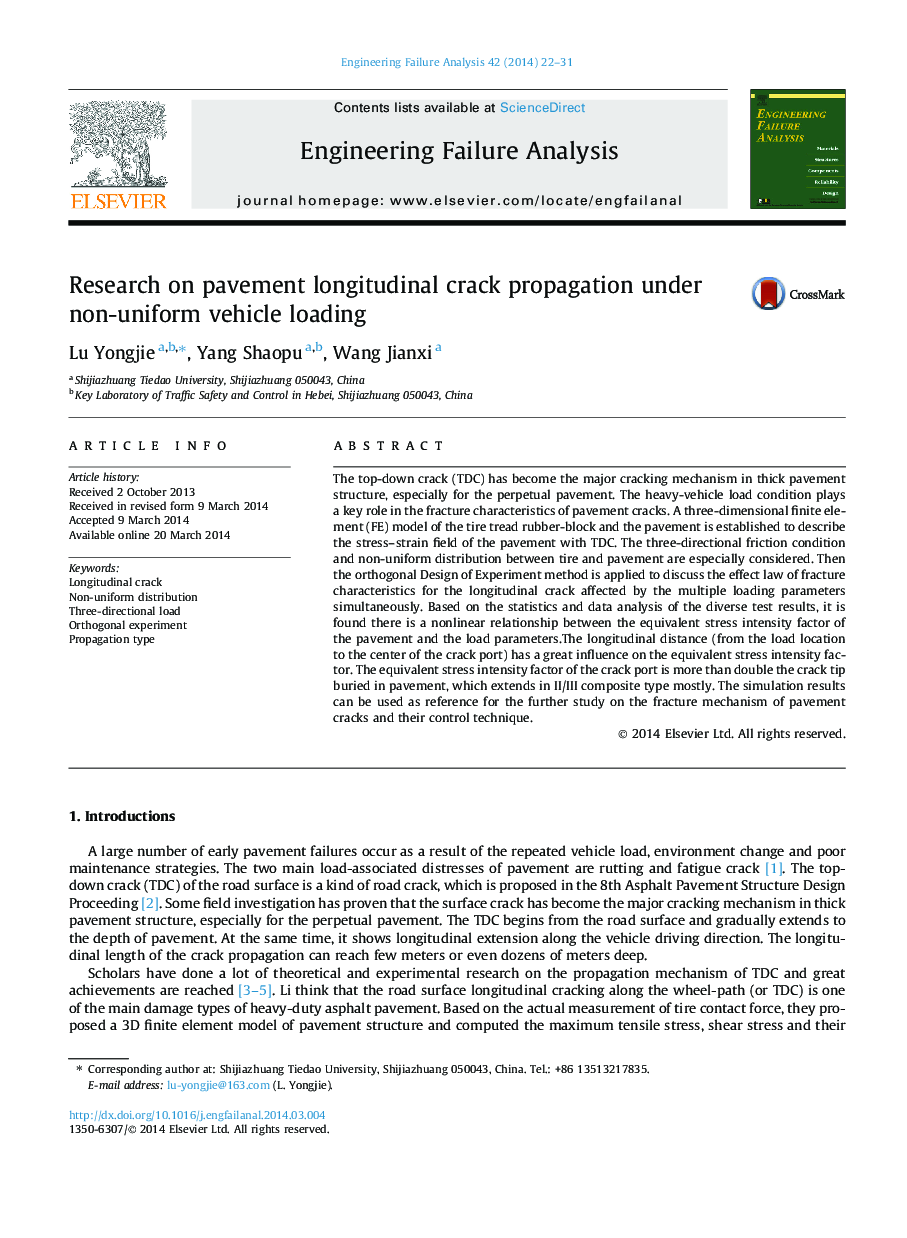| Article ID | Journal | Published Year | Pages | File Type |
|---|---|---|---|---|
| 763415 | Engineering Failure Analysis | 2014 | 10 Pages |
•FE model of tread rubber-block and the pavement with TDC is proposed.•Considering three-directional friction condition and non-uniform contact between tire and road.•Nonlinear relationship between pavement stress intensity factor and load parameters.•Longitudinal distance has a great effect on equivalent stress intensity factor.•Crack mouth is likely to expand and mostly extends in II/III composite form.
The top-down crack (TDC) has become the major cracking mechanism in thick pavement structure, especially for the perpetual pavement. The heavy-vehicle load condition plays a key role in the fracture characteristics of pavement cracks. A three-dimensional finite element (FE) model of the tire tread rubber-block and the pavement is established to describe the stress–strain field of the pavement with TDC. The three-directional friction condition and non-uniform distribution between tire and pavement are especially considered. Then the orthogonal Design of Experiment method is applied to discuss the effect law of fracture characteristics for the longitudinal crack affected by the multiple loading parameters simultaneously. Based on the statistics and data analysis of the diverse test results, it is found there is a nonlinear relationship between the equivalent stress intensity factor of the pavement and the load parameters.The longitudinal distance (from the load location to the center of the crack port) has a great influence on the equivalent stress intensity factor. The equivalent stress intensity factor of the crack port is more than double the crack tip buried in pavement, which extends in II/III composite type mostly. The simulation results can be used as reference for the further study on the fracture mechanism of pavement cracks and their control technique.
